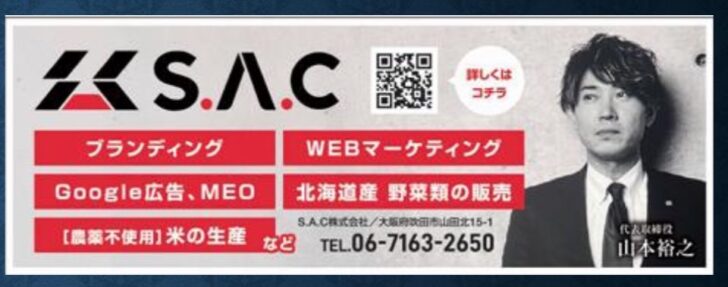2025年12月現在、AI業界は**「チャットボット(対話型)」から「AIエージェント(自律実行型)」への移行期**という大きな転換点を迎えています。単に質問に答えるだけでなく、人の代わりにタスクを計画・実行する能力が競争の主戦場となっています。
ご質問いただいた3大AIモデル(GPT、Gemini、Grok)の現状と違いを整理しました。
3大AIモデルの比較(2025年12月最新版)
それぞれのモデルは独自の強みを持ち、明確に「住み分け」が進んでいます。
| 特徴 | ChatGPT (OpenAI) | Gemini (Google) | Grok (xAI) |
| 最新モデル | GPT-4o / GPT-5 (噂) | Gemini 3 Pro (Preview) | Grok 4 |
| 最大の強み |
「総合力と自然さ」 最も人間らしく、創造的な文章や対話が得意。モバイルアプリの使い勝手が圧倒的に良い。 |
「実務能力と連携」 Google Workspace(Docs, Gmail等)やMapsとの連携が強力。長文処理やマルチモーダル(画像・動画)に強い。 |
「リアルタイム性と本音」 X (旧Twitter) の投稿をリアルタイム分析できる唯一のAI。建前を排した回答や、論理的推論が得意。 |
| 得意タスク | 文章作成、ブレインストーミング、相談相手、英会話 | 資料作成、データ分析、Google検索を伴う調査、動画解析 | トレンド把握、ニュース検索、皮肉やジョーク、高度な数学・プログラミング |
| エージェント能力 | 音声対話機能が非常にスムーズで、秘書のような使い心地。 | スケジュール調整やメール返信など、実務を代行する能力が高い。 | 刻一刻と変わる情報の分析や、検閲の少ない「尖った」視点の提供。 |
各モデルの詳細な現状
1. ChatGPT (OpenAI)
-
現状: 生成AIの代名詞として依然としてトップシェアを誇ります。特に「Advanced Voice Mode(高度な音声会話)」は、人間と話しているのと区別がつかないレベルの反応速度と感情表現を実現しており、英会話練習や壁打ち相手として最強です。
-
注目点: 2025年末にかけて次世代モデル「GPT-5(仮)」の登場が噂されていますが、現時点では**「最も使いやすく、創造的なパートナー」**という立ち位置です。
2. Gemini (Google)
-
現状: 2025年12月に入り、最新の**「Gemini 3」**シリーズが発表されました。Googleのエコシステム(Gmail, Drive, Mapsなど)と深く統合されており、「私の来週のスケジュールと、届いている請求書を確認して」といった個人的なタスクを処理できるのが最大の特徴です。
-
注目点: 処理できる情報量(コンテキストウィンドウ)が非常に大きく、分厚いマニュアルや長時間の動画を一度に読み込ませて分析させるならGemini一択です。
3. Grok (xAI)
-
現状: イーロン・マスク率いるxAIのモデルで、進化のスピードが著しいです。2025年夏にリリースされた**「Grok 4」**は、数学や物理などの理系科目のテストで驚異的なスコアを記録しました。
-
注目点: X(Twitter)の有料プランに含まれており、世界中のツイートをリアルタイムで検索・分析できます。「今、世界で何が起きているか」を調べるニュース検索ツールとしては他の追随を許しません。また、他のAIに比べて回答の「検閲」が緩く、議論の分かれる話題でも率直に答える傾向があります。
2025年の全体トレンド: 「AIエージェント」へ
これまでは「人間が指示を出し、AIが答える」形でしたが、現在は**「AIが自ら考え、行動する」**段階に入っています。
-
例: 「来週の旅行プランを考えて」と言うと、
-
これまで: プランのテキスト案を出してくれる。
-
これから: フライトの空き状況を確認し、レストランの予約サイトを開き、カレンダーに予定を入れ、同行者への招待メールの下書きまで作成する。
-
結論:どれを選ぶべき?
-
日常会話、文章作成、アイデア出しに使いたいなら → ChatGPT
-
仕事の効率化、Googleアプリとの連携、長文・動画分析なら → Gemini
-
最新ニュースの把握、Xユーザー、論理的・数学的なタスクなら → Grok
用途に合わせてこれらを使い分けるのが、現在の賢いAI活用法と言えます。
Here is the English translation of the explanation regarding the current state of AI as of December 2025.
As of December 2025, the AI industry is facing a major turning point: the transition from “Chatbots (Dialogue-based)” to “AI Agents (Autonomous Execution).” The main competitive battlefield has shifted from simply answering questions to the ability to plan and execute tasks on behalf of humans.
Below is a summary of the current status and differences between the three major AI models (GPT, Gemini, and Grok).
Comparison of the “Big Three” AI Models (Latest December 2025)
Each model has developed unique strengths, and the “division of roles” between them has become clear.
| Feature | ChatGPT (OpenAI) | Gemini (Google) | Grok (xAI) |
| Latest Model | GPT-4o / GPT-5 (Rumored) | Gemini 3 Pro (Preview) | Grok 4 |
| Greatest Strength |
“All-rounder & Naturalness” Most human-like; excels at creative writing and dialogue. The mobile app usability is overwhelmingly good. |
“Practicality & Integration” Powerful integration with Google Workspace (Docs, Gmail, etc.) and Maps. Strong in long-form content and multimodal processing (images/video). |
“Real-time & Unfiltered” The only AI that can analyze X (formerly Twitter) posts in real-time. Excels at logical reasoning and providing answers without “sugar-coating.” |
| Best Used For | Writing, brainstorming, acting as a sounding board, English conversation practice. | Document creation, data analysis, research involving Google Search, video analysis. | Trend tracking, news searching, sarcasm/jokes, advanced math and programming. |
| Agent Capability | Voice conversation features are incredibly smooth, offering a user experience like a personal secretary. | High capability to execute practical tasks, such as scheduling and drafting email replies. | Analyzing rapidly changing information and providing “edgy” perspectives with less censorship. |
Detailed Status of Each Model
1. ChatGPT (OpenAI)
-
Status: It remains the market leader and is synonymous with Generative AI. The “Advanced Voice Mode” is particularly notable, achieving reaction speeds and emotional expression indistinguishable from a human, making it the best choice for English practice or brainstorming.
-
Key Point: While the next-generation “GPT-5” (tentative name) is rumored to appear by the end of 2025, it currently holds the position of the “most easy-to-use and creative partner.”
2. Gemini (Google)
-
Status: As of December 2025, the latest “Gemini 3” series has been announced. It is deeply integrated with the Google ecosystem (Gmail, Drive, Maps, etc.). Its greatest feature is the ability to handle personal tasks, such as “Check my schedule for next week and the invoices I’ve received.”
-
Key Point: It has a massive context window (information processing capacity). If you need to analyze thick manuals or long videos all at once, Gemini is the only choice.
3. Grok (xAI)
-
Status: Led by Elon Musk, xAI’s model is evolving at a remarkable speed. “Grok 4,” released in the summer of 2025, recorded astonishing scores in STEM subjects like mathematics and physics.
-
Key Point: Included in X (Twitter) Premium plans, it can search and analyze global tweets in real-time. As a tool to find out “what is happening in the world right now,” it has no equal. Additionally, it has fewer “guardrails” (censorship) compared to other AIs and tends to answer controversial topics frankly.
The 2025 Trend: The Shift to “AI Agents”
Previously, the relationship was “Humans give instructions, AI answers.” Now, we have entered the stage where “AI thinks and acts on its own.”
-
Example: If you say, “Plan a trip for next week,”
-
Before: It would provide a text draft of a plan.
-
Now (Agent): It checks flight availability, opens restaurant reservation sites, adds the schedule to your calendar, and even drafts invitation emails to your travel companions.
-
Conclusion: Which one should you choose?
-
For daily conversation, writing, and idea generation → ChatGPT
-
For work efficiency, Google app integration, and long-form/video analysis → Gemini
-
For grasping the latest news, X users, and logical/mathematical tasks → Grok
Using these models distinctively according to your specific needs is the smartest way to utilize AI today.































「HOUYHNHNM(フイナム)」.jpg)
